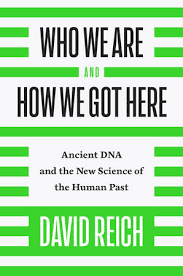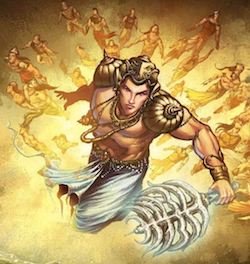If Dr. Alexander Semenenko’s analysis is right and damn seems so, this might be another foundation ripped from Aryan Migration or Invasion Theory. @themerumedia @brownpundits @omarali50 @TheEmissaryCo @razibkhan @kushal_mehra @thapli64 https://t.co/TCctzkcWNe
— Mukunda Raghavan (@raghman36) June 30, 2020
Readers know I do not like to watch YouTubes, but Mukunda is a member in-good-standing of the community, and a great host of the Browncast, so I did watch it.
My general reaction is “OK.” I don’t see how it changes my own views much at all. We know that the arrival of Kurgan people into Europe between 3000 and 2500 BC was not accompanied by the “light chariot.” Rather, they arrived in wagons. As it happens, the steppe people replaced 50-75% of the ancestry in Northern Europe, and 25-50% in Southern Europe. Contrary to I’ve been led to believe from Hollywood films apparently the primary utility of the chariot is as a transport vehicle, especially on flat ground. The light war chariot is presumably a major improvement on the cart, but the difference was presumably quantitative not qualitative.
Mukunda says that another foundation has been ripped from the Aryan migration/invasion theory. I don’t see it that way at all, because I don’t really know that this theory has too many detailed foundations. Mukunda’s response is pretty common, and I think some of the discordances here is that Indians have been educated in a way where many specific elements of the theory are presented as definitively and finally true. On the whole of course, real science does not work that way.
Here is what I know as a geneticist and have seen in the data.
– Genetic ancestry related to Corded Ware/Sintashta people of Eastern Europe and Central Asia contributes about 10-30% of the ancestry in Pakistan and Northern India (depending on the population)
– Y chromosomal lineage R1a1a-Z93 is ~15-25% of the subcontinental haplogroups. This lineage was discovered first in the “forest-steppe” of Europe’s southeast fringe with Central Asia and the Caucasus
– There are very few (though there are some) mtDNA haplogroups in South Asia that are found in Sintashta-Andronovo graves
The Sintashta seem to date from 2400 to 1800 BC as a culture. Additionally, the evidence from Turan and Khorasan in the ancient DNA does not indicate much steppe ancestry before 2000 BC.
To be frank, without genetic data I would not find a population admixture of 10-30% from a steppe group into the northwest subcontinent plausible on the face of it. Perhaps 1-3%. But the data are what they are, and we need to accept them. It is also plausible to me that the initial waves of migration into South Asia were not quite as male-biased as we think, as the proto-Indo-Aryans may have mixed with eastern Iranian/Indus periphery populations before arriving into Punjab. This would mean the population displacement is actually higher in demographic terms. The figures above only give percentages of “steppe”, and assumes pure admixture, which seems unlikely to me.
One hypothesis is that the IVC people already spoke Indo-Aryan languages. Perhaps the newcomers from the steppe assimilated into the local substrate, taking positions at the top of the caste hierarchy? I am skeptical of this. The Indo-European languages don’t exhibit the right structure for this model, as the European ones don’t form a natural closely related clade against the Iranian-South Asian ones. Rather, Indo-Aryan and Iranian seem closer to the Slavic clade.
As for all the rest, the details are interesting to me, but I don’t rest my inference on that. To be frank, some of the claims remind me of arguments I had with Creationists twenty years ago. It seems that they thought I had a very specific idea of what evolution is in all its details, so refuting one element refuted the theory. But that wasn’t it at all. Evolution is a broader framework, and many of the details have to be worked out.
That’s my general attitude to the Indo-Aryan migration into the subcontinent. It’s probably the right model. And we’ve pegged some details down. But a lot remains mysterious. Could the “Out of India” theory be right? The probability is definitely higher for that than that evolution is wrong. But on the whole, I am skeptical.
 They asked for my opinion. I agree with many of the aspects of the piece. There is something of an attempt, in my opinion, to downplay the coercion and violence that were part of the expansion of many Y chromosomal lineages, groups of males, ~4,000 years ago. In fact, the author of the above piece probably overestimates the fraction of Aryan mtDNA in India; most West Eurasian lineages in South Asia are probably from West Asian, not the Sintashta.
They asked for my opinion. I agree with many of the aspects of the piece. There is something of an attempt, in my opinion, to downplay the coercion and violence that were part of the expansion of many Y chromosomal lineages, groups of males, ~4,000 years ago. In fact, the author of the above piece probably overestimates the fraction of Aryan mtDNA in India; most West Eurasian lineages in South Asia are probably from West Asian, not the Sintashta.
